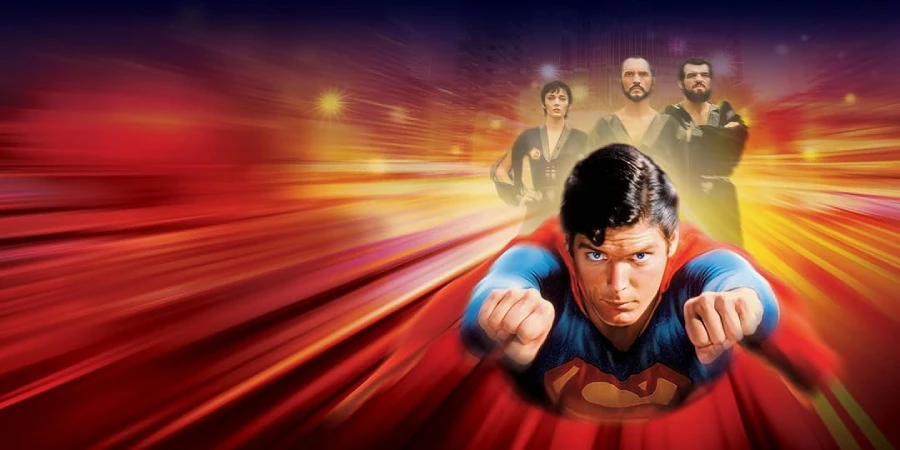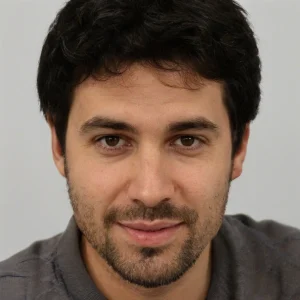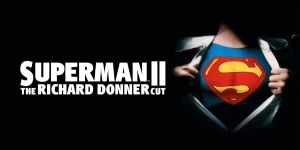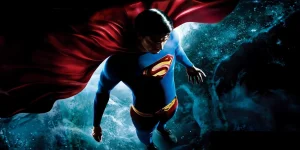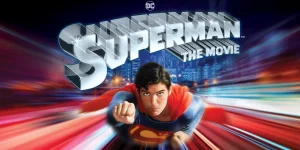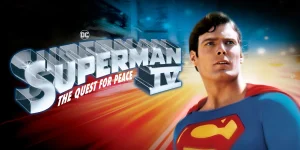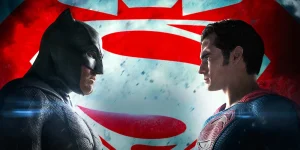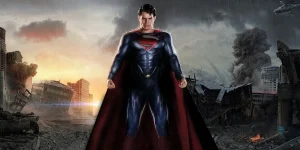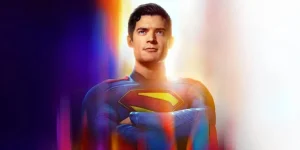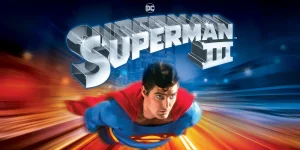Superman II (1980) is the high-flying sequel to Richard Donner’s 1978 Superman: The Movie, continuing the story of Clark Kent’s internal struggle between being Earth’s greatest protector and living a normal life with the woman he loves. It deepens the mythology of the Man of Steel while introducing formidable new villains and moral dilemmas. Directed by Richard Lester (with significant uncredited work from Donner), the film remains a fan-favorite in the superhero genre.
Table of Contents
ToggleDetailed Summary
Opening: Fallout from the First Film
The film opens with a clever recap of the events from Superman: The Movie, including Superman stopping Lex Luthor’s nuclear missile. Unbeknownst to Superman, the detonation of this missile in space inadvertently releases three Kryptonian criminals—General Zod, Ursa, and Non—from the Phantom Zone, a floating prism prison.
Meanwhile, Clark Kent (Christopher Reeve) continues his double life at the Daily Planet, hiding his true identity from his colleagues, especially Lois Lane (Margot Kidder), who begins to suspect that Clark and Superman might be the same person.
Zod Arrives on Earth
The Kryptonian criminals crash-land on Earth and quickly discover they possess the same superpowers as Superman under Earth’s yellow sun. With Zod’s authoritarian personality, Ursa’s ruthless loyalty, and Non’s brute strength, they begin their conquest by wreaking havoc in a small Idaho town. Zod is particularly obsessed with making the people of Earth kneel before him—his catchphrase becomes a memorable hallmark.
They then head to the White House, demand allegiance, and declare Zod as Earth’s new ruler.
Lois Discovers the Truth
Back at the Daily Planet, Lois becomes more suspicious of Clark’s identity. In a cabin getaway, she tricks Clark into revealing he is Superman. The moment is pivotal, revealing the vulnerability behind the hero. Clark takes her to his Fortress of Solitude where he expresses his desire to live a normal human life with her. To do so, he uses a red crystal chamber to permanently remove his powers, making himself mortal.
Unfortunately, this decision coincides with the Kryptonian villains’ rise to power.
Superman’s Crisis of Identity
Now powerless, Clark and Lois return to the real world. After being beaten up by a diner bully, Clark realizes the weight of his decision and the consequences for humanity. He returns to the Fortress, broken and desperate, and miraculously finds a way to restore his powers by reversing the effects of the red sun chamber—though the method is somewhat vague and unscientific (classic early superhero cinema).
Final Confrontation in Metropolis and the Fortress
With his powers restored, Superman returns to Metropolis, confronting Zod, Ursa, and Non in a battle that tears through the city. The destruction feels massive for a 1980s film and includes everything from heat vision duels to flying punches and witty banter.
The battle ends at the Fortress of Solitude. Superman, appearing to surrender, tricks the villains by reversing the red sun chamber so that it only strips them of their powers—while he remains unaffected. General Zod, smug and confident, orders Superman to kneel and take his hand… only to be crushed and thrown into an abyss by a now fully-powered Superman.
Lex Luthor, who has been awkwardly tagging along with the villains in hopes of currying favor, tries to switch sides once again but is outwitted by Superman.
Movie Ending
In the film’s final moments, Superman faces the emotional consequences of his choices. Realizing Lois can’t carry the burden of knowing his identity, he kisses her—activating a “super-kiss” that erases her memory of the entire affair. This controversial ending is either poetic or problematic, depending on whom you ask, but it effectively resets their dynamic.
Superman then returns to the diner where he was previously beaten and gives the bully a taste of his own medicine—one of the rare moments where Superman shows a touch of pettiness (and fans love it).
He also returns the American flag to the White House, affirming that he’s always working “for truth, justice, and the American way,” and reassures the President that he won’t let Earth down again.
It’s a satisfying yet bittersweet ending, underscoring the loneliness of Superman’s existence and the sacrifices he must make to be Earth’s guardian.
Are There Post-Credits Scenes?
No, Superman II does not have any post-credits scenes. This was long before Marvel made mid and post-credit scenes a standard feature. Once the credits roll, the story is considered complete.
Type of Movie
- Genre: Superhero, Action, Adventure, Sci-Fi, Romance
- Tone: Dramatic with touches of humor and camp
- Audience: PG-rated, family-friendly, though more intense than its predecessor
Cast
- Christopher Reeve – Superman / Clark Kent
- Margot Kidder – Lois Lane
- Gene Hackman – Lex Luthor
- Terence Stamp – General Zod
- Sarah Douglas – Ursa
- Jack O’Halloran – Non
- Ned Beatty – Otis
- Valerie Perrine – Eve Teschmacher
- E.G. Marshall – The President
Film Music and Composer
- Composer: Ken Thorne (based on themes by John Williams)
Thorne adapted Williams’ iconic Superman themes for this sequel. While it lacks the full grandeur of the original Superman: The Movie score, it remains powerful and recognizable, especially in action scenes and emotional moments.
Filming Locations
- Pinewood Studios, UK – Fortress of Solitude and interior scenes
- New York City (as Metropolis) – Establishing shots
- Niagara Falls, Canada – Site of Clark and Lois’s romantic getaway
- Norway – Some exterior arctic scenes for the Fortress
Niagara Falls plays a significant role in the Lois-Clark relationship, serving as the place where she finally confirms her suspicions about Superman’s identity.
Awards and Nominations
- Nominated for Best Science Fiction Film at the Saturn Awards
- Margot Kidder won a Saturn Award for Best Actress
- Received some recognition for its special effects, though they were modest by today’s standards
Behind the Scenes Insights
- Richard Donner originally directed Superman II concurrently with the first film, but was controversially replaced by Richard Lester.
- Around 75% of Donner’s original footage was reshot or replaced, leading to fan demand for the “Donner Cut” (released in 2006).
- Gene Hackman refused to return for reshoots after Donner was fired, so some of his scenes were completed using a double or voiceover impersonation.
- Tensions between producers and Donner led to creative disagreements that heavily impacted the final version.
- The “super-kiss” was one of several narrative liberties taken to wrap up plot threads that had no clear resolution.
Inspirations and References
- Based on the DC Comics Superman stories by Jerry Siegel and Joe Shuster
- Specifically inspired by Superman comic arcs featuring General Zod and the Phantom Zone villains
- The romantic tension between Clark and Lois draws from Silver and Bronze Age comic depictions
Alternate Endings and Deleted Scenes
- The “Donner Cut” (2006) offers an alternate version of the film with a different ending, where Superman reverses time again (like in the first film) to undo the events of Superman II.
- Several additional scenes between Clark and Lois, and more philosophical moments with Jor-El (Marlon Brando, cut from the theatrical version), are restored in this version.
Book Adaptations and Differences
There were novelizations and comic adaptations of Superman II, mostly based on early scripts. These versions tend to:
- Include extended inner monologues
- Focus more on the emotional and moral consequences of Superman’s power loss
- Retain scenes that were cut from the final theatrical release
Memorable Scenes and Quotes
Key Scenes
- Zod and his crew attacking the White House and demanding Earth’s surrender
- Clark sacrificing his powers in the Fortress of Solitude
- Superman kneeling before Zod—then crushing his hand and turning the tables
- Lois confronting Clark and pushing him into a fireplace to prove he’s Superman
Iconic Quotes
- General Zod: “Kneel before Zod!”
- Lois Lane: “You know, you’re a real pain in the neck.”
- Superman: “General, would you care to step outside?”
- President: “Oh God.”
Zod: “Zod.”
Easter Eggs and Hidden Details
- The Phantom Zone visuals were created using practical effects and multi-layered camera tricks—innovative for their time.
- The Superman shield throw (at the Fortress) was a one-time creative addition and has never appeared in any comic.
- Lex Luthor’s prison number is A-38, referencing Action Comics #1 (1938), Superman’s first appearance.
Trivia
- Christopher Reeve bulked up significantly between the first and second films.
- Terence Stamp filmed most of his scenes without wires, preferring to simulate flight with subtle body movement and post-production work.
- A cameo by Superman co-creator Joe Shuster was planned but never filmed.
- Director Richard Lester added more slapstick comedy than Donner intended.
Why Watch?
Superman II elevates the emotional and moral stakes of the superhero genre. It’s not just about strength and speed—it’s about identity, sacrifice, and love. You’ll see Superman at his most human, most vulnerable, and most triumphant. It’s essential viewing for anyone who appreciates classic hero storytelling.
Director’s Other Movies (Richard Lester)
- A Hard Day’s Night (1964)
- Help! (1965)
- The Three Musketeers (1973)
- Superman III (1983)

